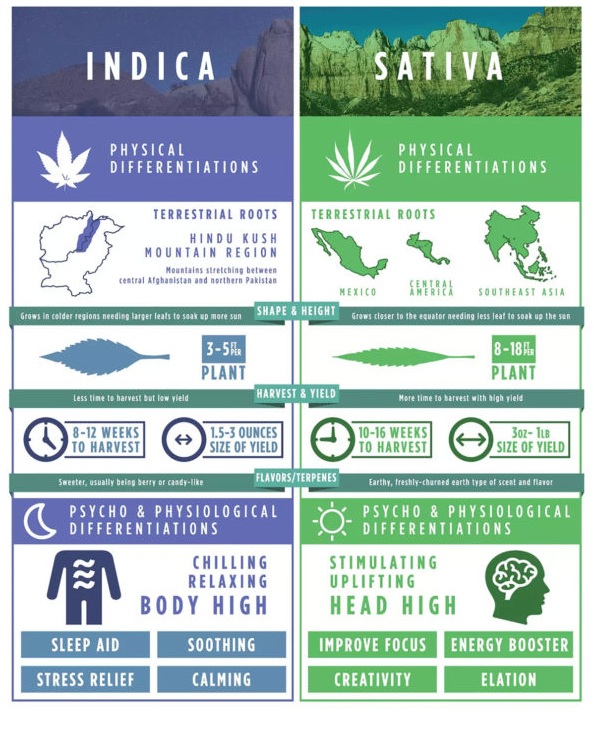Currently Empty: $0.00
- Home
- Sativa vs Indica
Sativa vs Indica
Indica
Indica marijuana strains originate from the harsh, cool, mountainous regions of Pakistan and Afghanistan. These harsh climates naturally forged hardy subspecies composed of stout, bushy stalks (2-4 feet tall), typically yielding high (~18%) THC-laden plants in comparison to their Sativa counterparts. The leaves of an Indica plant are robust and a darker shade of green than those of a Sativa. Their short stature and quick flowering time also make them ideal for indoor cultivation.
Indcas’ physical effects can be felt throughout the body, and many users report feeling exceptionally relaxed, or even sedated, after a dose of pure Indica. This means Indica strains are best at soothing symptoms of chronic pain, anxiety, insomnia, and even neurological conditions (like Multiple Sclerosis, seizures, or muscle spasms).

Sativa
Sativa marijuana strains thrive in temperate climates, in latitudes closer to the equator — think Southeast Asia, Columbia, or Mexico. The Sativas’ stalks are much taller and lankier (up to 20 feet when grown outdoors) than the short bushels of the Indica, and are further distinguished by bearing a lighter shade of green on their narrow leaves.
Sativa plants are generally lower in THC content than Indica (often falling between 12-16%), but they more than make up for it in terpenes. Sativas are known to be quite pungent, with the terpenes present in any particular strain allowing it to waft aromas ranging from sweet and fruity, to spicy, earthy, or even diesel-fuel. Of course, there exist high-THC Sativas and low-THC Indica strains — but they are the exception, and not the rule.
Energy is the hallmark of a Sativa high. Recommended for daytime consumption, you can expect an uplifting, creative, and generally mentally stimulating time with a Sativa. Patients suffering from depression, fatigue, or AD(H)D often turn to Sativa for medicinal relief.




